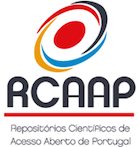Transdermal Scopolamine in the Treatment of Sialorrhea in Neurological Pathology: Literature Review
DOI:
https://doi.org/10.25759/spmfr.448Keywords:
Nervous System Diseases/complications, Scopolamine/administration & dosage, Sialorrhea/drug therapy, Sialorrhea/etiology, Transdermal PatchAbstract
Sialorrhea is a frequent symptom and can affect the neurological patient in various ways. Despite multiple therapeutic options being available, it remains a challenge to manage. The aim of this narrative review is to analyse the scientific evidence regarding transdermal scopolamine in the treatment of sialorrhea in patients with neurological disorders.
We performed a search in PubMed database and selected 7 studies, published between 1988 and 2020, according to inclusion and exclusion criteria.
Transdermal scopolamine has demonstrated a positive effect in improving sialorrhea and caregiver’s satisfaction as well as reducing the incidence of complications (aspiration and hospital readmissions). All studies report side effects, particularly local cutaneous reactions, xerostomy, constipation, behavioural changes and ophthalmologic effects. The suspension of the use due to side effects tends to increase with follow-up time, reaching 82% after 1 year. These studies have limitations that relate to the study design, small number of patients, loss of follow-up and outcome measures.
When managing sialorrhea it is essential to consider the balance between symptomatic relief and the side effects of the different treatment options. Scopolamine in its transdermal formulation showed good effect in the management of sialorrhea in patients with neurological conditions, revealing, however, increasing rates of treatment suspension with longer periods of usage, due to side effects. Its use for short periods can be beneficial and it may be a useful alternative for the management of sialorrhea in patients with neurological disorders, as long as its contraindications are acknowledged and side effects are monitored. Due to the scarcity of evidence, we cannot yet conclude about the best line of treatment for sialorrhea.
Downloads
References
Lakraj AA, Moghimi N, Jabbari B. Sialorrhea: anatomy, pathophysiology and treatment with emphasis on the role of botulinum toxins. Toxins. 2013;5:1010-31.
Hockstein N, Samadi D, Gendron K, Handler S. Sialorrhea: A Management Challenge. Am Fam Physician. 2004; 69: 2628-34.
Johnson H, Scott A. Saliva Management. In: Dysphagia: Foundation, Theory and Practice. West Sussex: John Wiley & Sons Ltd;2006. p. 126.
Glickman S, Deaney CN. Treatment of relative sialorrhoea with botulinum toxin type a: Description and rationale for an injection procedure with case report. Eur J Neurol. 2001;8: 567–71.
Banfi P, Ticozzi N, Lax A, Guidugli GA, Nicolini A, Silani V. A review of options for treating sialorrhea in amyotrophic lateral sclerosis. Respir Care. 2015;60:446-54. doi: 10.4187/respcare.02856.
Mato A, Limeres J, Tomás I, Muñoz M, Abuín C, Feijoo JF, Diz P. Management of drooling in disabled patients with scopolamine patches. Br J Clin Pharmacol. 2010; 69: 684–8.
Squires N, Wills A, Rowson J. The management of drooling in adults with neurological conditions. Curr Opin Otolaryngol Head Neck Surg. 2012, 20: 171-6. doi: 10.1097/MOO.0b013e32835328ec.
McGeachan AJ, Hobson EV, Al-Chalabi A, Stephenson J, Chandran S, Crawley F, et al. A multicentre evaluation of oropharyngeal secretion management practices in amyotrophic lateral sclerosis. Amyotroph Lateral Scler Frontotemporal Degener. 2017; 18:1-9.
Jongerius PH, Van Tiel P, Van Limbeek J, Gabreëls FJ, Rotteveel JJ. A systematic review for evidence of drugs to treat drooling. Arch Dis Child. 2003; 88: 911–14.
You P, Strychowsky J, Gandhi K, Chen BA. Anticholinergic treatment for sialorrhea in children: A systematic review. Paediatr Child Health. 2021;27:82- 7. doi: 10.1093/pch/pxab051.
Bushara KO. Sialorrhea in amyotrophic lateral sclerosis: a hypothesis of a new treatment - botulinum toxin A injections of the parotid glands. Med Hypotheses. 1997; 48: 337-9.
Yu YC, Chung CC, Tu YK, Hong CT, Chen KH, Tam KW,et al. Efficacy and safety of botulinum toxin for treating sialorrhea: A systematic review and meta-analysis. Eur J Neurol. 2022;29:69-80. doi: 10.1111/ene.15083.
Shehee L, O'Rourke A, Garand KL. The role of radiation therapy and botulinum toxin injections in the management of sialorrhea in patients with amyotrophic lateral sclerosis: a systematic review. J Clin Neuromuscul Dis. 2020;21:205-21. doi: 10.1097/CND.0000000000000273.
Schild SD, Timashpolsky A, Ballard DP, Horne S, Rosenfeld RM, Plum AW. Surgical management of sialorrhea: a systematic review and meta-analysis. Otolaryngol Head Neck Surg. 2021;165:507-18. doi: 10.1177/019459 9820985165.
Food and Drug Administration. Drugs@FDA: FDA Approved Drug Products. [homepage da internet]. [consultado Jan 2022] Disponível em: https://www.accessdata.fda.gov/scripts/cder/daf/index.cfm? event=overview. process&ApplNo=017874
Brodtkorb E, Wyzocka-Bazowska MM, Lillevold PP, Sandvik L, Saunte C, Hestnes A. Transdermal scopolamine in drooling. J Ment Defic Res. 1988; 32:233-7.
Infarmed.pt [homepage da Internet]. [consultado Jan 2022] Disponível em: https://www.infarmed.pt/web/infarmed/servicos-on-line/pesquisa-do- medicamento
Lewis DW, Fontana C, Mehallick LK, Everett Y. Transdermal scopolamine for reduction of drooling in developmentally delayed children. Dev Med Child Neurol. 1994; 36:484-6.
Parr JR, Weldon E, Pennington L, Steen N, Williams J, Fairhurst C, et al. The drooling reduction intervention trial (DRI): a single blind trial comparing the efficacy of glycopyrronium and hyoscine on drooling in children with neurodisability. Trials. 2014;15: 60.
Parr JR, Todhunter E, Pennington L, Stocken D, Cadwgan J, O'Hare AE, et al. Drooling Reduction Intervention randomised trial (DRI): comparing the efficacy and acceptability of hyoscine patches and glycopyrronium liquid on drooling in children with neurodisability. Arch Dis Child. 2018; 103: 371-6.
Reid SM, Westbury C, Guzys AT, Reddihough DS. Anticholinergic medications for reducing drooling in children with developmental disability. Dev Med Child Neurol. 2020;62:346-53. doi: 10.1111/dmcn.14350.
Al Jeraisy M, AlFuraih M, AlSaif R, AlKhalifah B, AlOtaibi H, Abolfotouh MA. Efficacy of scopolamine transdermal patch in children with sialorrhea in a pediatric tertiary care hospital. BMC Pediatr. 2020;20:437. doi: 10.1186/s12887-020-02336-x.
Saeed M, Henderson G, Dutton GN. Hyoscine skin patches for drooling dilate pupils and impair accommodation: spectacle correction for photophobia and blurred vision may be warranted. Dev Med Child Neurol. 2007; 49:426-8.
Food and Drug Administration. [homepage na Internet]. [consultado Jan 2022] Disponível em: https://www.accessdata.fda.gov/drugsatfda_docs/ label/2013/017874s038lbl.pdf
Downloads
Published
How to Cite
Issue
Section
License
Copyright statement
Authors must also submit a copyright statement (as seen below) on article submission.
To the Editor-in-chief of the SPMFR Journal:
The below signed author(s) hereby state that the article
________________________________________ (ref. MFR_________) is
an original unpublished work and all facts stated are a product of the author(s) investigation. This article does not violate any copyright laws or privacy statements. The author(s) also hereby confirm that there is no conflict of interest's issues in this article.
By submitting this article the author(s) agree that after publication all copyrights belong to the SPMFR Journal.
Signed by all authors
Date:
Names (capital letters):
Signatures:
The SPMFR Journal’s contents are follow a Creative Commons licence. After publication the authors can hand out the articles as long as the SPMFR Journal is credited.



